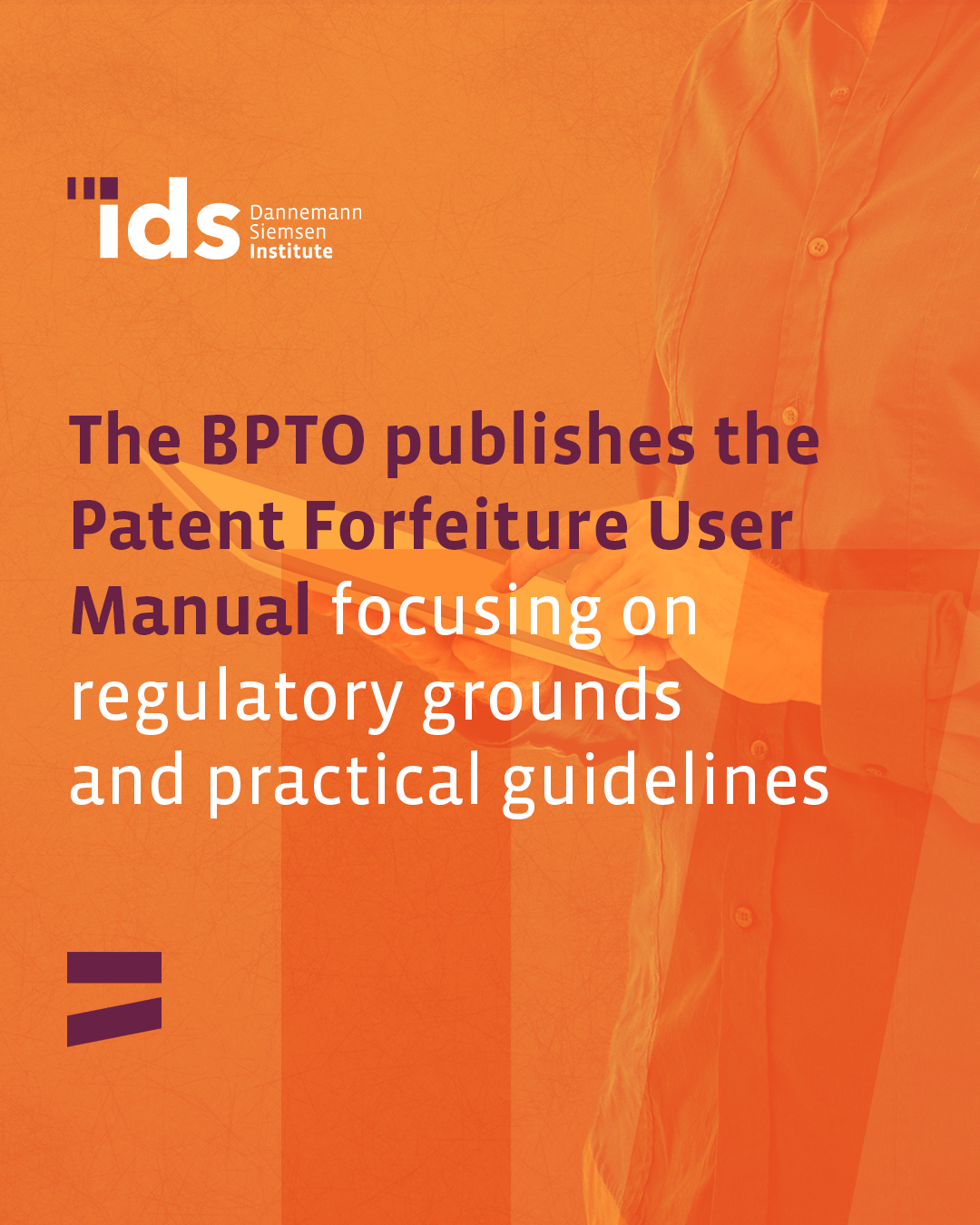15 de julho de 2025
Share
The Brazilian Patent and Trademark Office (BPTO) published, through Ordinance BPTO/DIRPA No. 10, dated June 18, 2025, the Patent Forfeiture User Manual. As highlighted in the document, its objective is to present forfeiture as a regulatory instrument essential to the governance of industrial property, clarify its legal treatment under current legislation, disambiguate its application across different normative contexts, and provide practical guidelines for its administrative processing within BPTO.
Firstly, the manual emphasizes that although forfeiture broadly signifies the extinction of rights due to non-compliance with legal conditions, in the patent context it assumes specific contours regulated by the Brazilian Industrial Property Law (Law No. 9,279/1996). Here, forfeiture constitutes an administrative sanction imposed for the patent holder’s failure to fulfill legal obligations, aiming to promote the proper use of protected technologies and balance the social, economic, and technological functions of Brazil’s innovation system.
Normatively, the manual traces the historical evolution of patent forfeiture in Brazil, situating it within the international framework established by the Paris Convention for the Protection of Industrial Property (PC) and the TRIPS Agreement. The document recalls historical statutes addressing forfeiture since the 19th century, culminating in the current regime under Law No. 9,279/1996. It notes that the Industrial Property Law incorporated PC guidelines by stipulating that forfeiture may only be applied after a prior unsuccessful attempt to enable patent exploitation through compulsory licensing.
Following the historical overview, the manual addresses administrative and substantive aspects. Forfeiture is regulated by Articles 80 to 83 of the Industrial Property Law and may be initiated by any party with legitimate interest, including competitors, public entities, or INPI ex officio.
The manual clarifies the appropriate timing for filing a forfeiture petition and the formal and substantive requirements to be observed. Under the law, compulsory licensing can only be requested after three years from patent grant, while forfeiture may be sought only after two years of unsuccessful exploitation attempts via such licensing.
Regarding substantive prerequisites, the document highlights the necessity to demonstrate that the patent was subject to compulsory licensing and that, notwithstanding this, the protected technology remains unexploited within national territory.
Upon BPTO’s acknowledgment of the forfeiture petition and notification of the patent holder, the procedural phase begins. Although the patent holder’s response is not mandatory, absence thereof presumes non-exploitation of the patent, potentially leading to direct approval of the forfeiture request.
The manual then proceeds to the technical examination stage, verifying compliance with legal requirements, including the validity of compulsory licensing, the correspondence between the licensed object and the patent, and proof of non-exploitation of the technology even after two years from the licensing grant.
Finally, the manual clarifies that any judicial challenge to the compulsory license suspends the administrative forfeiture process until final judicial decision, since annulment of the compulsory license by the judiciary undermines the basis for forfeiture. Technical findings are submitted to the Patent Director, who holds the administrative authority to decide on forfeiture. If granted, the forfeiture effects are ex tunc, retroactive to the date of legal non-compliance, resulting in the cessation of patent rights from that moment and the transfer of the patent subject matter into the public domain.
The document, in Portuguese, can be accessed via the link: Manual
Note: For quick release, this English version is provided by automated translation without human review.
